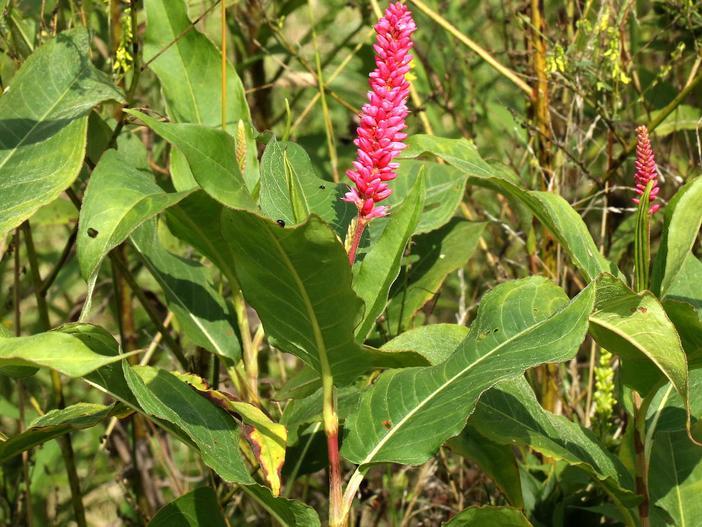Water Smartweed
(Persicaria amphibia var. emersa)
Water Smartweed (Persicaria amphibia var. emersa)
/
/

Peterwchen
CC BY-SA 4.0
Image By:
Peterwchen
Recorded By:
Copyright:
CC BY-SA 4.0
Copyright Notice:
Photo by: Peterwchen | License Type: CC BY-SA 4.0 | License URL: https://creativecommons.org/licenses/by-sa/4.0 | Uploader: Peterwchen | Publisher: Wikipedia Commons

Estimated Native Range
Summary
Persicaria amphibia, commonly known as Water Smartweed or Longroot Smartweed, is a rhizomatous perennial herb that thrives in a variety of wetland habitats, including the margins of ponds and lakes, slow-moving streams, marshes, and wet meadows. It is native to a broad region encompassing much of North America, Asia, Europe, and parts of Africa. The plant exhibits remarkable plasticity, occurring as both aquatic and terrestrial forms, depending on the water level. It typically has stems that can reach up to 10 feet in length and lance-shaped leaves that may grow up to 1 foot long. The flowers are small, pink, and arranged in dense, spike-like inflorescences that bloom from mid-summer to early fall.
Water Smartweed is valued for its ability to stabilize soil and provide habitat for wildlife in wetland areas. It is also used for ornamental purposes in water gardens and naturalized pond settings. In cultivation, it prefers full sun to part shade and requires consistently moist or even saturated soil conditions. While it can be a vigorous grower, it is generally not problematic in its native range. However, Persicaria amphibia var. emersa is known to be potentially invasive in some regions outside its native habitat. Gardeners should be cautious and consult local regulations before planting it in non-native areas. Its invasive potential is due to its aggressive growth and ability to form dense mats that can outcompete native vegetation.CC BY-SA 4.0
Water Smartweed is valued for its ability to stabilize soil and provide habitat for wildlife in wetland areas. It is also used for ornamental purposes in water gardens and naturalized pond settings. In cultivation, it prefers full sun to part shade and requires consistently moist or even saturated soil conditions. While it can be a vigorous grower, it is generally not problematic in its native range. However, Persicaria amphibia var. emersa is known to be potentially invasive in some regions outside its native habitat. Gardeners should be cautious and consult local regulations before planting it in non-native areas. Its invasive potential is due to its aggressive growth and ability to form dense mats that can outcompete native vegetation.CC BY-SA 4.0
Plant Description
- Plant Type: Herb
- Height: 1.5-3 feet
- Width: 2-3 feet
- Growth Rate: Rapid
- Flower Color: Pink
- Flowering Season: Summer
- Leaf Retention: Deciduous
Growth Requirements
- Sun: Full Sun, Part Shade
- Water: High, Aquatic
- Drainage: Standing, Slow, Medium
Common Uses
Bird Garden, Erosion Control, Water Garden
Natural Habitat
Native to wetland habitats including pond margins, lake edges, slow-moving streams, marshes, and wet meadows
Other Names
Common Names: Water Smartweed, Water Knotweed, Coloured Smartweed, Devil’s Shoestring, Swamp Knotweed, Swamp Smartweed, Amphibious Bistort, Tanweed
Scientific Names: , Persicaria amphibia var. emersa, Persicaria coccinea, Persicaria coccinea subsp. pratincola, Persicaria emersa, Persicaria emersa var. asprella, Persicaria muhlenbergii, Persicaria pratincola, Polygonum amphibium f. emersum, Polygonum amphibium var. coccineum
GBIF Accepted Name: